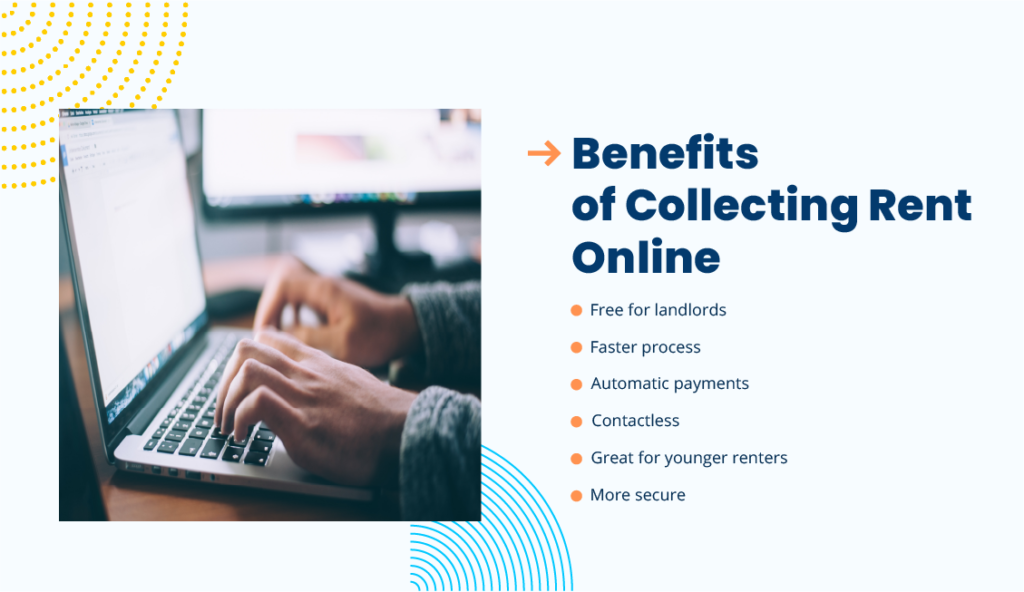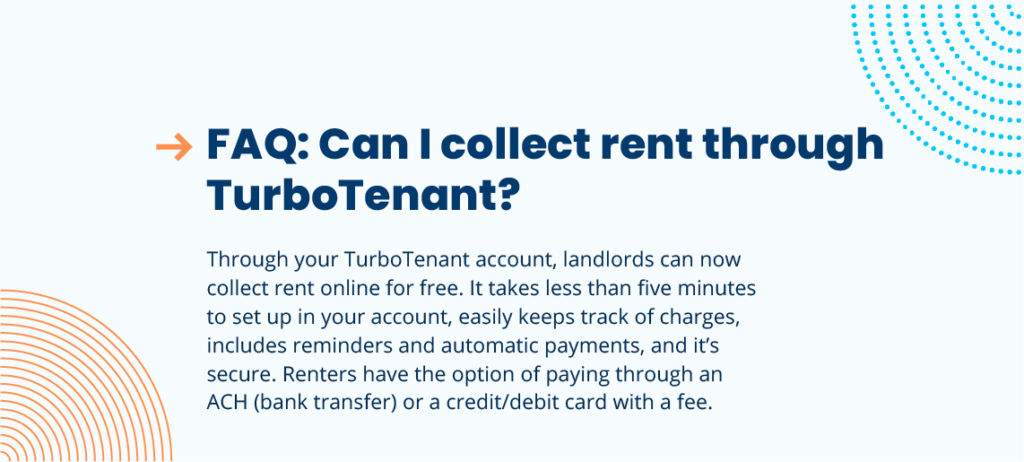4 min read
Meet the TurboTeam: Goran Maksimovic
And then you realize that the people are your source that you’re learning from. And the people keep you in company and...

Collecting rent is one of the most important recurring tasks a landlord handles, and it can also be one of the easiest. When it comes to rent payments, there are a variety of options landlords can implement – from traditional checks to online rent payments. As a landlord, you’ll need to decide which rent collection method is best for your rental business.
Luckily, the digital age has transformed the landlord experience by streamlining the process online, saving both time and money. Receiving the best ROI on your rental properties should always be at the forefront of your mind, which means having a seamless way to collect rent.
On TurboTenant’s platform, we now give renters the option to set up Autopay so that the rent is paid in full every month. We also allow landlords to automatically charge Late Fees by setting the amount and defining when a charge is officially late.
Below, we’ve compiled a comprehensive pros-and-cons guide covering both online and traditional rent payment options.
In the past few years, mail theft doubled, according to a report from the United States Postal Service. Thankfully, property management software has made it easy and safe to collect rent online.
Younger generations, who make up a larger portion of the renting population, often prefer the convenience of online rent collection and may be unfamiliar with checks. At the end of 2021, 41% of renters reported paid their rent with a money transfer via an ACH, digital wallet, or rent payments platform. Plus, online rent payments can help tenants in many other ways – including Rent Reporting, which is the process of reporting on-time rent payments to credit bureaus in order to build valuable credit history.
Don’t be intimidated by going digital. You’ll discover it will help you further streamline the rental process and reach a larger renter demographic. Here are some of the most popular ways to collect rent online:
Setting up a direct deposit between your tenant’s bank account and your own via ACH (bank transfer) can be a great option. This is usually a free service for both parties, requiring you and your tenant to work together to set it up. You can also use ACH through most property management platforms. If you have multiple bank accounts you’d like to set up, our Premium Plan might be right for you.
Applications like Venmo, Paypal, and Zelle all provide extremely convenient online payment methods. In 2023, these online services are some of the most popular ways to transfer money electronically, but this doesn’t mean they don’t come with their fair share of downsides, especially for business owners like landlords.
Credit and debit cards are often requested payment methods by tenants. Using credit cards or debit cards is simple and can be done through a variety of services, but tenants are typically charged a processing fee when paying through a service. That’s because most credit card companies enforce it.

These tried-and-true rent collection methods are probably ones you’ve used before, or maybe are currently using for your rental properties – but they’re fading out fast. With the pandemiccame a need for contactless rent payment methods, which pushed landlords and tenants to leverage digital payment methods. According to a 2020 report by the National Landlord Association , online payments doubled from 17% in Q4 2019 to 33% in Q4 2020. Despite this trend, traditional rent payment options can be great for older renters or if you prefer not to use technology – but there are also disadvantages you should consider.
One of the oldest methods of payment – cash is a secure payment method in the sense that cash can never bounce. If you are handed cash from a tenant, you know you can deposit it into your bank account with no problem. But if you are using cash, you need to keep detailed records for yourself.
One of the most widely used methods of payment, personal checks are even simpler than cash; a check isn’t bulky and can be put in the mail. Checks can be a good option for long-distance landlords.
Money orders and cashier’s checks are considered safer than personal checks because you need to use verified funds to purchase them. However, although it’s harder, they can still be canceled before you deposit them.
Even if your current method of collecting rent payments has worked well for you, sometimes it’s important to try new methods for a variety of reasons including the following:
Overall, when deciding upon your rent payment method, focus on creating an easy system that tracks payments and late fees. If your current system is not working well, consider new options that provide a more efficient process. Remember, because rent payments are a property investor’s main income, starting with a solid way to screen tenants will help you know they have a good track record and credit score before ever moving them into your property.

Through your TurboTenant account, landlords can collect rent online for free. It takes less than five minutes to set up in your account, easily keeps track of charges, includes reminders and automatic payments, and it’s secure. Renters can pay through an ACH (bank transfer) or a credit/debit card with a fee. Plus, landlords can also track offline rent payments like cash or check transactions, ensuring all payments—whether online or offline—are recorded in one place for seamless management.
Collecting rent online whether it’s through TurboTenant, or other online money transfer services is very safe and convenient. We partner with leaders in the financial industry to transfer money and make sure your information is encrypted. Sensitive information for renters and landlords will not be shared with anyone else.
For landlords, most payment platforms do not charge the landlord to collect rent online.
When it comes to choosing the best way to collect rent payments from your tenants, there is no black and white answer. Ultimately, it comes down to the best process for you and your renters. Paper check payments are still a popular method among landlords, but online rent payment services are only becoming increasingly popular with the digital generations.
4 min read
And then you realize that the people are your source that you’re learning from. And the people keep you in company and...
5 min read
We have this really good integration. We make them feel like they are part of the company....but it’s like we also make...
4 min read
Well, I guess the thing that pops into my mind right now is you have a lot of freedom to do things...
Join the 700,000+ independent landlords who rely on TurboTenant to create welcoming rental experiences.
No tricks or trials to worry about. So what’s the harm? Try it today!
Accept Rent Online!
Don’t waste time dealing with checks or coordinating pickup times.
TurboTenant is a safe and convenient way to automate rent collection.